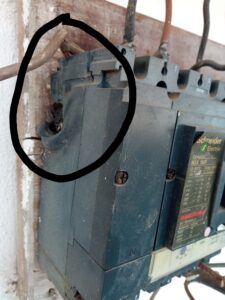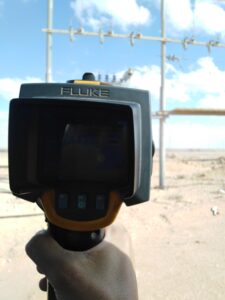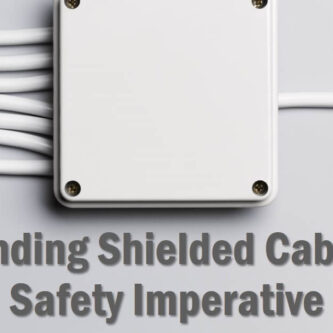Loose electrical connections are a common problem in electrical systems. They can cause a range of issues, from intermittent power outages to system failures and even fire hazards.
But one of the most significant risks associated with loose connections is heat generation.
When a connection is loose, it increases the resistance in the circuit, which, in turn, can cause the connection to heat up.
In this article, we will explore the physics behind this phenomenon and discuss the consequences of heat buildup in electrical systems.
The Physics of Loose Electrical Connections
To understand why loose electrical connections cause heat, we need to look at the physics of electrical circuits.
Every electrical circuit has a certain amount of resistance, which determines how much current flows through the circuit for a given voltage.
The resistance is determined by the material properties of the conductor and the dimensions of the circuit.
When a connection is tight and secure, the electrical current flows smoothly through the conductor without any significant resistance.
However, when a connection is loose, the electrical current has to travel through a smaller contact area, which increases the resistance in the circuit.
This increased resistance generates heat, which is proportional to the square of the current and the resistance of the circuit, according to Ohm’s Law.
The Consequences of Heat Buildup

The heat generated by a loose electrical connection can cause a range of issues, from minor to severe.
In the short term, it can cause the connection to become even looser, which can result in intermittent power outages or fluctuations in voltage.
In the long term, heat buildup can cause damage to the insulation surrounding the conductor, leading to premature failure of the system.
Moreover, excessive heat can lead to the breakdown of the contact material, which can cause arcing, or the creation of a spark between the contacts.
Arcing can be extremely dangerous, as it can cause a fire or even an explosion if it occurs in a hazardous environment.
Therefore, it is crucial to address loose connections promptly to avoid these potential hazards.
Common Causes of Loose Electrical Connections
- Improper installation
- Corrosion or contamination of contacts
- Thermal expansion and contraction
- Vibration and movement
- Overloading or excessive current flow
- Inadequate maintenance or wear and tear over time.
Several factors can contribute to the formation of loose electrical connections.
- Vibration: One of the most common causes is vibration or physical stress on the connectors. Over time, the constant movement can cause the connections to loosen, leading to increased resistance and heat generation.
- Thermal expansion: Another factor is thermal expansion and contraction. As electrical components heat up and cool down, they can change shape slightly, leading to small variations in the contact pressure between connectors. This can cause the connections to become looser over time, which can lead to heat buildup.
- Corrosion or contamination: Corrosion or contamination of contacts can also cause loose electrical connections. When contact surfaces are dirty or corroded, they can create a higher resistance than a clean contact surface. This increased resistance can lead to heat generation, which can further exacerbate the problem.
- Improper installation: When electrical connections are not installed correctly, they may be loose or poorly connected from the start. This can lead to issues such as heat buildup, arcing, and electrical fires.
- Overloading or excessive current flow: When electrical circuits are overloaded with too much current flow, it can cause heat buildup and damage to the electrical connections. This can happen when devices are plugged into an outlet or circuit that cannot handle the amount of power they require.
- Inadequate maintenance or wear and tear over time: Electrical connections can become loose over time due to wear and tear or inadequate maintenance. This can happen when electrical systems are not inspected or maintained regularly, leading to loose connections and other issues.
Detection and Prevention of Loose Connections

It is essential to detect and prevent loose electrical connections to avoid potential hazards. One way to detect loose connections is through visual inspection of the connections.
Thermal imaging
Yes, thermal imaging is a valuable detection method for identifying loose connections. It can be used to quickly and easily identify hot spots caused by heat buildup in electrical systems.
In my work, by using thermal imaging cameras, I can detect hot spots that are not visible to the naked eye and take corrective action before the connection becomes a safety hazard.
This technique can also help identify loose connections in hard-to-reach areas or locations that are otherwise difficult to access.
In addition to thermal imaging, other detection methods include visual inspection, electrical testing, and regular maintenance and inspection procedures.
Other methods
Loose connections may appear to be blackened or charred, which is a sign of excessive heat buildup.
Another way to detect loose connections is through electrical testing techniques. These techniques involve measuring the resistance of the circuit and comparing it to the expected resistance.
A significant deviation from the expected resistance can indicate the presence of a loose connection.
Preventing loose connections requires proper installation and maintenance procedures. Connections should be tightened to the manufacturer’s specifications and should be periodically inspected for signs of looseness or corrosion.
Regular system monitoring and maintenance can also help detect and prevent loose connections before they become a hazard.
Read also my article Don’t Ignore the Buzzing in Extension Cords
Conclusion
In conclusion, a loose electrical connection can cause heat buildup in electrical systems, which can lead to a range of issues, from minor to severe.
The heat generated by a loose connection can cause damage to insulation, increase the risk of fire or explosion, and even lead to system failure.
Common causes of loose connections include vibration, thermal expansion, and corrosion or contamination of contacts.
Fortunately, detecting and preventing loose connections is possible through visual inspection and electrical testing techniques, as well as proper installation and maintenance procedures.
By being vigilant and taking appropriate action, we can avoid the hazards associated with loose electrical connections and ensure the safety and reliability of our electrical systems.
you work With Electricity! Don’t leave empty-handed!
Looking to stay ahead of the game in the world of electrical engineering? Subscribe to my YouTube channel and gain access to exclusive content you won’t find anywhere else!
The staff I recommend (Amazon Affiliate Links to products I believe are high quality):
- Economy 120 Volt/60Hz AC Power Source – Step-Down Voltage & Frequency Converters 1800W
- UNI-T Digital Multimeter Tester UT139C
- 50-Amp Extension Cord for RV “100ft”
- Voltage Stabilizer 110/220v
- Hair Dryer “best selling“
- TOSHIBA EM131A5C-BS Countertop Microwave Ovens
Disclaimer: This contains affiliate links to Amazon products. I may earn a commission for purchases made through these links.

